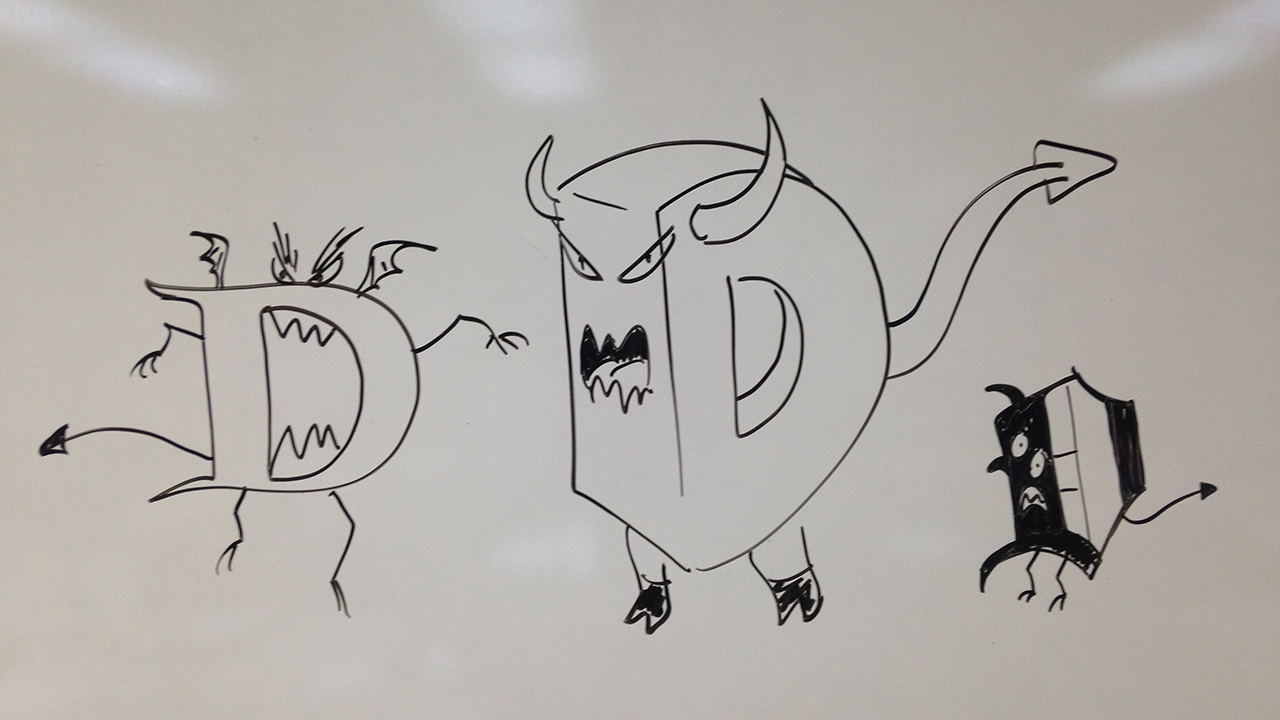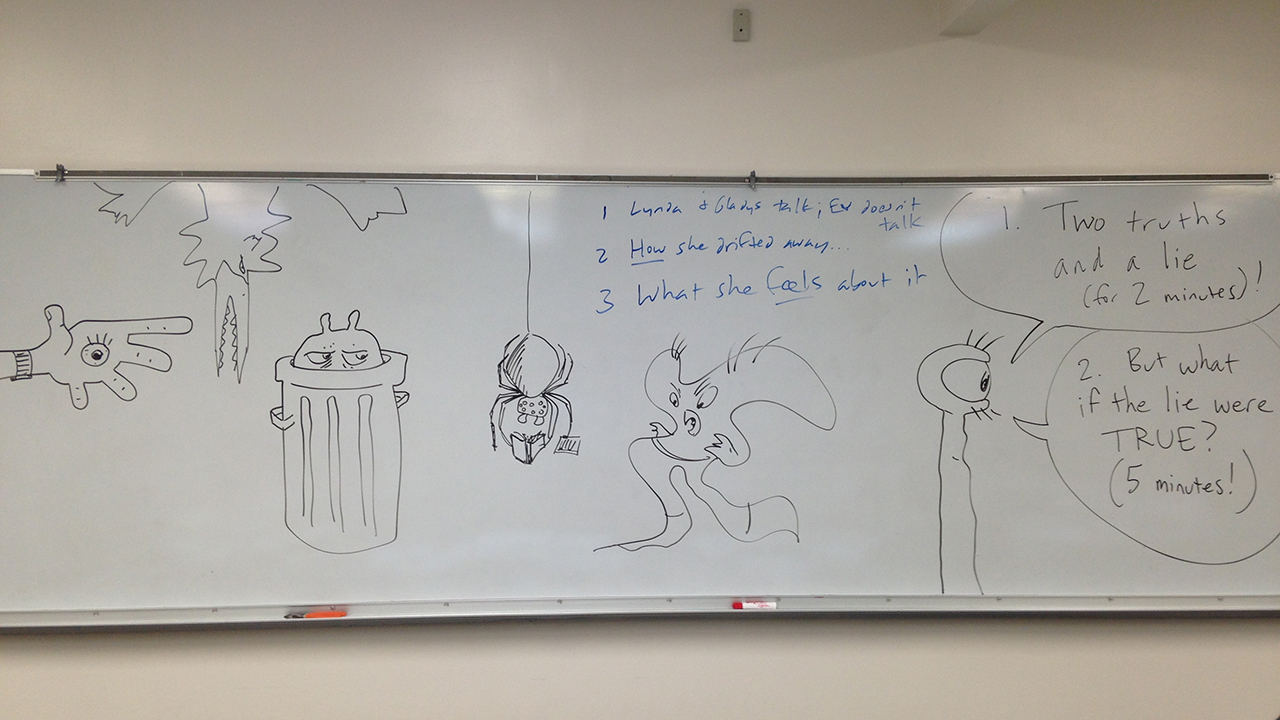For four days toward the end of fall semester, my sophomore English students began every class by exercising their demons. Not exorcising demons, to drive them out, but rather summoning them up by way of a brief drawing exercise inspired by our reading at the time, Lynda Barry’s One Hundred Demons.
Barry classifies her book as “autobifictionalography,” asking, “Is it autobiography if parts of it are not true? Is it fiction if parts of it are?” The book deploys comic strips and collage to tell 17 stories about Barry’s inner demons and outer demons, ranging from “Hate” to “The Aswang” (a shape-changing monster from her mother’s childhood in the Philippines). The stories often revisit the “Lost Worlds” of childhood and confront the traumas that can underlie “Resilience,” and they conclude with a meditation on how the confidence to write stories can be both “Lost and Found.”
My students followed Barry’s lead in mining their own memories and experiences to see what images they could excavate and then refine into their own works of autobifictionalography, alloying truth and fiction as needed. We started each day by drawing demons for a few minutes before turning to writing exercises based on memory prompts and to discussion of Barry’s formal techniques, both verbal and visual. Our goal was not only for the students to understand Barry’s stories from the inside out, but to learn how to craft their own stories, to give visible shape to their inner demons (which did not need to be scary, by the way!). The end result was a powerful collection of student stories, some in prose and some in comics, inspired by Barry’s example but finding their own forms.
For my own part in finding the form of how to teach this text to 10th graders, I had invaluable help from my colleague Katherine Dunbar, a true pedagogical partner in piloting this unit for the sophomore curriculum. Katherine talked through every aspect of class design with me in her role as an instructional coach for fellow faculty, and she helped ensure that each day’s lesson was focused on a powerful topic that used Barry’s works to center student experiences in a way that was emotionally compelling as well as intellectually challenging. Whatever the uncertain boundaries of fiction and autobiography, it is wholly true that One Hundred Demons allowed for fruitful discovery and invention between and among teachers and students, stories and readers.





